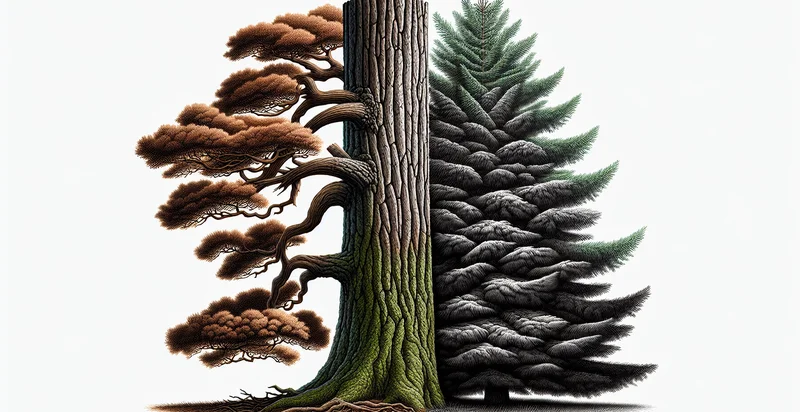Identify hardwood vs softwood
using AI
Below is a free classifier to identify hardwood vs softwood. Just upload your image, and our AI will predict if the wood is hardwood or softwood - in just seconds.

Contact us for API access
Or, use Nyckel to build highly-accurate custom classifiers in just minutes. No PhD required.
Get started
import nyckel
credentials = nyckel.Credentials("YOUR_CLIENT_ID", "YOUR_CLIENT_SECRET")
nyckel.invoke("hardwood-vs-softwood", "your_image_url", credentials)
fetch('https://www.nyckel.com/v1/functions/hardwood-vs-softwood/invoke', {
method: 'POST',
headers: {
'Authorization': 'Bearer ' + 'YOUR_BEARER_TOKEN',
'Content-Type': 'application/json',
},
body: JSON.stringify(
{"data": "your_image_url"}
)
})
.then(response => response.json())
.then(data => console.log(data));
curl -X POST \
-H "Content-Type: application/json" \
-H "Authorization: Bearer YOUR_BEARER_TOKEN" \
-d '{"data": "your_image_url"}' \
https://www.nyckel.com/v1/functions/hardwood-vs-softwood/invoke
How this classifier works
To start, upload your image. Our AI tool will then predict if the wood is hardwood or softwood.
This pretrained image model uses a Nyckel-created dataset and has 2 labels, including Hardwood and Softwood.
We'll also show a confidence score (the higher the number, the more confident the AI model is around if the wood is hardwood or softwood).
Whether you're just curious or building hardwood vs softwood detection into your application, we hope our classifier proves helpful.
Related Classifiers
Need to identify hardwood vs softwood at scale?
Get API or Zapier access to this classifier for free. It's perfect for:
- Sustainable Sourcing: Companies that source timber can utilize the hardwood vs softwood identifier to ensure they are making informed purchasing decisions that support sustainable practices. By classifying wood types accurately, businesses can reduce their environmental impact and enhance their brand reputation by promoting responsible sourcing.
- Quality Control in Manufacturing: Wood manufacturers can implement this classification function as a part of their quality control processes. By ensuring that the correct wood type is used in products, they can maintain consistent quality and reduce defects caused by using inappropriate materials.
- Furniture Design and Production: Furniture designers can leverage the identifier to select suitable wood types for their designs. Understanding the differences between hardwood and softwood allows for better material selection that aligns with aesthetic goals, durability requirements, and cost constraints.
- Construction Material Assessment: Construction firms can utilize this function during the procurement phase to differentiate between various wood materials. Knowing whether timber is hardwood or softwood can help in determining load-bearing capacities, longevity, and suitability for various structural applications.
- Educational Purposes: Educational institutions and training programs can employ this technology to teach students about the characteristics of different wood types. By incorporating practical identification tools into their curriculum, students gain hands-on experience that reinforces their understanding of wood science and forestry.
- Recycling and Repurposing: Companies involved in recycling wood can adopt this identifier to streamline their sorting processes. By accurately classifying incoming wood materials as hardwood or softwood, they can optimize recycling pathways or repurposing strategies for maximum material recovery.
- Market Analysis and Sales Strategy: Retailers in the wood and timber industry can analyze market trends through data derived from the classification function. Understanding the demand for hardwood versus softwood can inform inventory decisions and targeted marketing campaigns to better meet customer preferences and increase sales.


